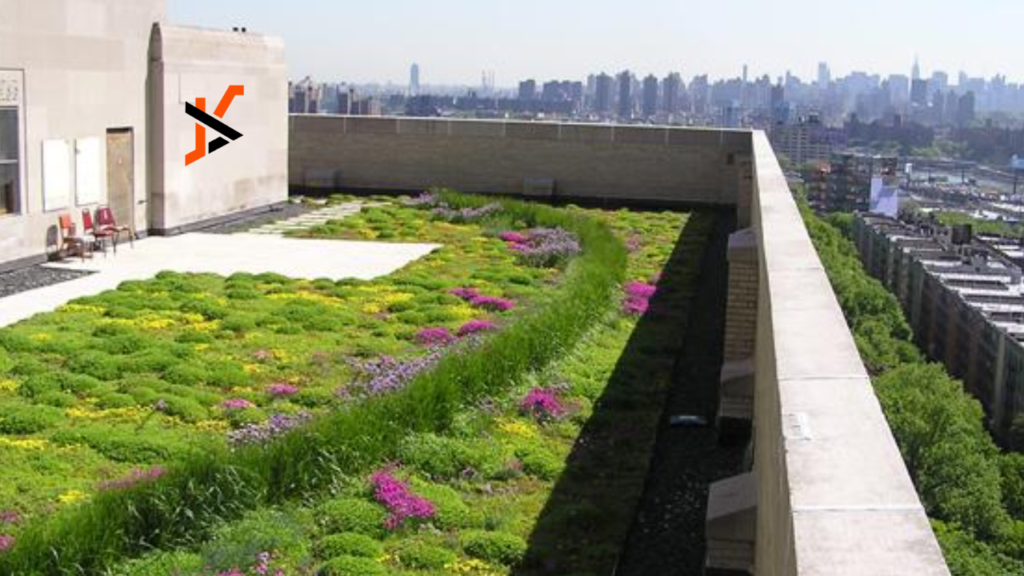Introduction
Urban centers face numerous environmental challenges, from air pollution to the heat island effect, which can significantly affect the quality of life. Innovative solutions like green roofing not only address these issues but also enhance urban sustainability. On Top Roofing Property Management LLC stands at the forefront of these initiatives, offering advanced green roofing solutions that contribute to a healthier, more sustainable urban environment.
Understanding Green Roofing
Green roofing, an increasingly popular practice in urban areas, involves the growth of vegetation on building rooftops. These systems come in various types, such as intensive, semi-intensive, and extensive, each varying in depth of growing medium and maintenance needs. While they offer significant environmental benefits, the installation of green roofs requires careful planning and consideration of building structural integrity and waterproofing.
Benefits of Green Roofing Systems
Green roofs provide substantial environmental benefits, including enhanced insulation and decreased runoff. They also improve air quality by filtering pollutants and carbon dioxide out of the air, contributing to the mitigation of urban pollution.
Challenges and Considerations
Despite their benefits, green roofs present challenges such as higher upfront costs and the need for strong structural support. Property owners must evaluate these factors to determine the feasibility of installing a green roofing system.
Environmental Benefits of Green Roofs
Green roofs play a crucial role in enhancing urban environments by mitigating some of the negative impacts of city living.
Improvement in Air Quality
By incorporating plant life, green roofs act as natural air filters, absorbing pollutants and producing oxygen. This process is vital in urban areas where air quality may be degraded by high levels of vehicle emissions and industrial activities.
Reduction of Urban Heat Islands
Green roofs help reduce the urban heat island effect, a condition in which city environments become significantly warmer than their rural surroundings. The vegetation on green roofs provides natural cooling, reducing the need for air conditioning and thereby decreasing energy consumption.
Stormwater Management
Another significant benefit of green roofs is their ability to absorb and retain rainwater. This capability reduces stormwater runoff, decreasing the burden on urban sewage systems and mitigating the risk of flooding.
Economic Advantages for Property Owners
Investing in green roofing can yield considerable economic benefits for property owners.
Long-term Cost Savings
Although the initial installation cost of a green roof can be higher than traditional roofing materials, the long-term savings in energy costs and roof longevity can be significant. Green roofs provide natural insulation, reducing the need for heating in winter and cooling in summer.
Increase in Property Value
Properties with green roofs often enjoy a higher market value due to their aesthetic appeal and environmental benefits. This feature can be particularly attractive in urban markets where eco-friendly solutions are increasingly sought after.
Energy Efficiency Improvements
Green roofs contribute to a building’s energy efficiency. The layer of soil and vegetation provides insulation and cooling, which can significantly reduce a building’s energy consumption, especially during peak summer months.
Social and Health Impacts
The implementation of green roofs brings various social and health benefits, enhancing the livability of urban environments.
Enhancement of Aesthetic Appeal
Green roofs greatly improve the visual impact of buildings, adding lush greenery that can enhance the aesthetic of otherwise stark urban landscapes. This greening of urban areas can have profound effects on the well-being of residents and workers.
Psychological and Health Benefits
Studies have shown that green spaces can reduce stress and improve mental health. Residents in buildings with green roofs may experience these psychological benefits, including increased happiness and reduced stress levels.
Community and Biodiversity Impacts
Green roofs can also create new habitats for wildlife and contribute to biodiversity. They offer a space for community gardening and local food production, fostering community interaction and environmental awareness.
Implementing Green Roofing Systems
The successful implementation of a green roof requires careful planning and ongoing maintenance to ensure its long-term health and effectiveness.
Key Steps for Installation
Installing a green roof involves several key steps, including structural assessment, waterproofing, choosing the right vegetation, and installing proper drainage and irrigation systems. These steps are crucial for the success and sustainability of the roof.
Maintenance and Care
Regular maintenance is necessary to ensure the longevity and effectiveness of green roofs. This includes irrigation management, weeding, and ensuring the health of the plants, which requires periodic checks and care.
Selecting the Right Partner for Roofing Solutions
Choosing the right company to design and implement a green roofing system is critical. A company with expertise in green roofs can provide valuable guidance and ensure that the installation meets all technical requirements and sustainability goals.
Conclusion
Green roofing represents a powerful tool for improving urban sustainability. Through their numerous environmental, economic, and social benefits, green roofs can transform urban areas into more livable, environmentally friendly spaces. As cities continue to grow, the role of specialized companies in advancing these green initiatives will be crucial in fostering sustainable urban environments.

